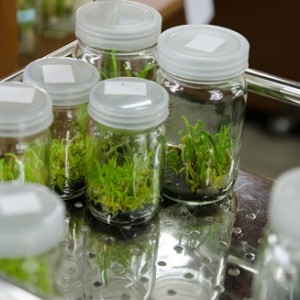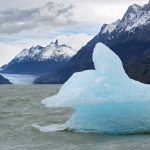
Environmental biology - rather like environmental chemistry - is a broad and growing subject that links environmental science to STEM (Science, Technology, Engineering and Mathematics). Environmental biologists try to understand biological life as it relates to the environment - this can include impact on zoology, botany, ecology, landscape studies and more. Because of this landscape focus, GIS is an ideal tool for the environmental biologist to adopt.
Geographic Information Systems projects allow the study and examination of geographic data. The various data that often comes from disparate sources can sometimes be difficult to comprehensively analyse, but GIS is the perfect tool to allow this to happen, helping researchers and decision-makers to understand the full picture. Presently, there are no specific options to take GIS as an undergraduate degree in the US. Environmental biologists who may be handling geographic data ought to consider studying a GIS MS/MA after completion of their bachelor's degree. Most colleges and universities have minors or electives in GIS today - it is advisable to enrol on such a course where available.
GIS allows environmental biologists to work with geographic data in compiling lists of evidence - sometimes, this may be areas where specialists work separately and may not always be able to come together. GIS bridges these gaps in specialism through an easy to use technology that is engaging and approachable for those who need to see data in graphic and map form (1, p69). Amongst other things, it allows experts to compare data to build a full picture of a local environment. Please see our dedicated GIS page for more information.
How GIS Data Helps Environmental Biology
Environmental biology compares, contrasts, and brings together many disparate areas. Though most graduates will enter into a niche role in more traditional areas (such as zoology, botany, microbiology, ecology, conservation) it is this discipline that allows those experts to understand the wider impacts and implications of the environment on their niche area or vice versa (2). GIS aids environmental biologists in the following areas:
- The study of land use change: One of the most important factors in ecology is in mapping how a landscape changes over time. With growth of human settlement and the need to preserve an ever-growing area of land, as well as to protect delicate areas, there is a strong increase in the use of GIS in forestry and mapping those natural areas legally protected under conservation laws. There is a great example of a study in the Philippines where deforestation on Sibuyan Island was mapped with GIS (1, p66-68). Mapping tree loss is important to how we measure climate change and for managing working forests.
- In understanding habitat connectivity (3): This means the study of how biological elements of a landscape work together, affect each other and are affected by changes to environmental conditions. The study of the Sibuyan Island deforestation discussed above did not just examine threats to the number of trees and stability of the underlying soils, there are also a number of knock-on effects for other wildlife (1, p68) when an ecology alters. Every action, such as cutting down trees for farmland, even cutting trees for new planting can affect mosses, animal life, the amount of ground water, the level of tree cover and much more.
- Crop improvement: though this is more the professional remit of agricultural science, it is of vital importance that we understand how to improve yields and protect soil quality in our prime agricultural areas (4) and to make marginal landscapes work for the environment and the people who live there. Whether planning resource management, analysing grazing patterns of livestock and wild animals (and how to protect crops from the latter) (5) is vital to the economies of developed and developing countries. “Food security” is one of the buzzwords of recent years and we need to take care to protect our crops from every potential threat.
- Other food source management: Similarly, for many places around the world, years of overfishing has brought problems for local environments. To some, there is the need to balance the danger of risking collapse of local fish stocks against the risks to the economies of local communities who rely on fishing. The increase in the number of fishing vessels in one local community (6, p300-301) and the competing interests of different countries sharing the same fishing zones (7, p1-2) can affect fish stocks dramatically and have a knock-on effect for the eco-system. Overfishing is not a new concept; as early as 1860, economists in the UK have worried about North Sea stocks. Environmental biologists have been at the forefront of addressing this problem for several decades and GIS data has been effective in monitoring population increase and decline (p7, 8-9), permitting the British government and EU authorities to introduce regulation.
- Protecting environments and delicate ecosystems: Environmental protection is one of the areas to have adopted GIS fairly early. There is often a lot of data generated, even in a small area, with competing points of view and interests. In a protected environment, plant specialists will often be in disagreement with herpetologists, with ornithologists and so on. The EPA has used GIS for decades to record and monitor protected landscapes and ocean areas within the US' borders and waters (8). Monitoring can be over a small or wide area and the data presented flexibly (9).
- Evolutionary biology: Since Charles Darwin first explained the Theory of Evolution in 1859, the natural sciences experienced extraordinary growth in our understanding of the natural world. There is not a biological science untouched by evolutionary theory. Recently, we have come to understand that one of the major forcings of evolution is environmental adaptation. GIS is an underused tool in plotting evolutionary change but that is changing (10).
Case Study: Phylogeography of the Red Cheeked Salamander
Phylogeography is the study of genetic variation over a geographic area, taking into account the topographical differences that may impact the genetic makeup of a species and which factors are driving those changes. We now know that environmental pressure is a powerful driver of genetic change in population: access to food and water (and the types of food available), climate, types of prey and other factors can lead to speciation even when populations are separated by just a few miles. GIS has enormous potential for evolutionary biologists in tracking and mapping regional and climate variation, plotting population islands and pockets and tracking evolutionary variation. The three main non-biological drivers of evolution are all geographic in nature:
- Precipitation -including variation in rain, humidity and water table
- Temperature - which can vary within a few feet where elevation has a dramatic effect
- Topography - the features and form of the area where the biological form lives
Other considerations include general climate, local flora and fauna, water and soil (10, p2). Despite that GIS has yet to be adopted fully as a tool in this area it has proven useful for ecological niche modelling and biodiversity informatics, providing vital data on climate variation and how that affects local wildlife (11).
It also shows us the geographic and climatic limits of certain species - helping us to preserve sensitive environments for those species. In one example, Plethodon jordani (the red-cheeked salamander), it was identified that this common North American species, endemic in eastern mountain areas, has a topographical niche wider than where it is currently found (10, p3). Such data can help us understand the resulting effects of climate change on common species and project how their populations might change with climate adaptation.
Case Study: Protecting Our Landscapes
Landscape conservation, both legally and in practice, presents issues that may conflict with each other. A decision to create, expand or restore a wetlands landscape for example may encourage and promote species that can thrive in those areas but may have a devastating effect on other nature species - putting them under threat where no threat previously existed.
In such a delicate ecosystem as a rainforest, and for one that covers such a large area, it's important to set aside areas for conservation. After all, in developing and emerging economies, often the economic cost of conservation can be high even if the benefits are immeasurable. Even amongst conservation groups, there is not always agreement on which areas can or should be protected. GIS can helps address all of these issues, presenting problems and aid in the decision making process (12, p207) largely because most of these decisions are taken on a geographic basis - in essence it is a process of strategic planning. GIS allows up to the minute information based on present survey data. A quick comparison is often at the core of which areas to protect and which to manage as it is rare that anybody can agree which are most appropriate (12, p213).
One other area where GIS benefits environmental biology and the study of geographic data is landscape connectivity (13). One of the major factors for specialists studying biodiversity and conservation, it concerns the protection of natural environments and how such elements as human action and natural processes affect ecology. It is vital in understanding how populations survive in an existing landscape and how we might preserve landscapes in a changing climate.
Case Study: Plotting Population Trends
There are also profound uses for GIS in microbiology and health planning as we seek to understand changing habits of species that spread disease and how those habits might affect human health. One of the biggest fears of climate change is the extent to which disease carrying mosquitos may enter areas that don't currently have those tropical diseases (14, p458) - southern Europe is one area of concern if malarial mosquitos migrate northwards across the Mediterranean as the climate becomes more favourable, entering Italy, Spain and southern France - possibly farther north too.
These risks to human health from malaria and other tropical diseases may mark a fundamental change in the health planning of many first world countries. We know that malaria especially is environmentally sensitive and the effects of climate change are not yet fully understood, but extensive understanding of the geographic distribution of malaria means that GIS will become more vital in planning the spread of disease. Due to prior and ongoing risk analyses of African villages presently at in malarial areas (15), we already have a clear idea of how this will work in practice. Health bodies presently use GIS distribution to understand not just the spread of disease, but also modelling and projecting potential high risk areas.
In Singapore, biologists have used data collected from ovitraps and plotted then into GIS databases to attempt to monitor the potential spread of Dengue Fever - another dangerous disease transmitted by mosquitoes (14).The ovitraps - simple plastic devices -have proven useful in a country with limited resources. The relative expense of GIS together with the collection method has made for an efficient project in tracking mosquitos. In a similar study on Hawaii, GIS was also used to monitor the potential threats of Dengue Fever to the local population (16). The difference with Hawaii is that it is a re-emerging disease on the islands, possibly exacerbated by climate change. In understanding such re-emergences, we can perhaps prepare for whatever future changes may come.
Related Degrees
Sources
- Longley, P.A., Goodchild, M.F., Maguire, D.J. & Rhind D.W. 2011: Geographic Information Systems & Science (Third Edition). Wiley: Hoboken, New Jersey
- https://bigfuture.collegeboard.org/majors/biological-biomedical-sciences-ecology-evolution-related-sciences-environmental-biology
- http://www.gislounge.com/conservation-biology-and-gis/
- http://www.publish.csiro.au/?paper=FP02020
- http://www.researchgate.net/profile/Arnaud_Bertrand/publication/222654824_The_impact_of_overfishing_and_El_Nio_on_the_condition_factor_and_reproductive_success_of_Peruvian_hake_Merluccius_gayi_peruanus/links/0deec5230a812a18c2000000.pdf
- http://www.researchgate.net/profile/Robert_Schwartz10/publication/273770778_Digital_partnership_combining_text_mining_and_GIS_in_a_spatial_history_of_sea_fishing_in_the_United_Kingdom_1860_to_1900/links/550c2c8c0cf2528164dba7cb.pdf
- http://www.epa.gov/geospatial/
- http://www.geos.ed.ac.uk/~gisteac/gis_book_abridged/files/ch71.pdf
- http://www.amnh.org/our-research/center-for-biodiversity-conservation/biodiversity-informatics
- http://www2.montes.upm.es/personales/saura/pdf/Saura_and_PascualHortal_2007_LAUP.pdf
- http://www.ncbi.nlm.nih.gov/pmc/articles/PMC1523278/pdf/envhper00354-0050.pdf
- http://arizona.openrepository.com/arizona/bitstream/10150/280619/1/azu_td_3145084_sip1_m.pdf#page=56
- Guide to Parasitology - November 19, 2018
- Deserts as Ecosystems and Why They Need Protecting - November 19, 2018
- Conservation: History and Future - September 14, 2018
Related Articles
Featured Article

Geospatial Technology: An Introduction and Overview





